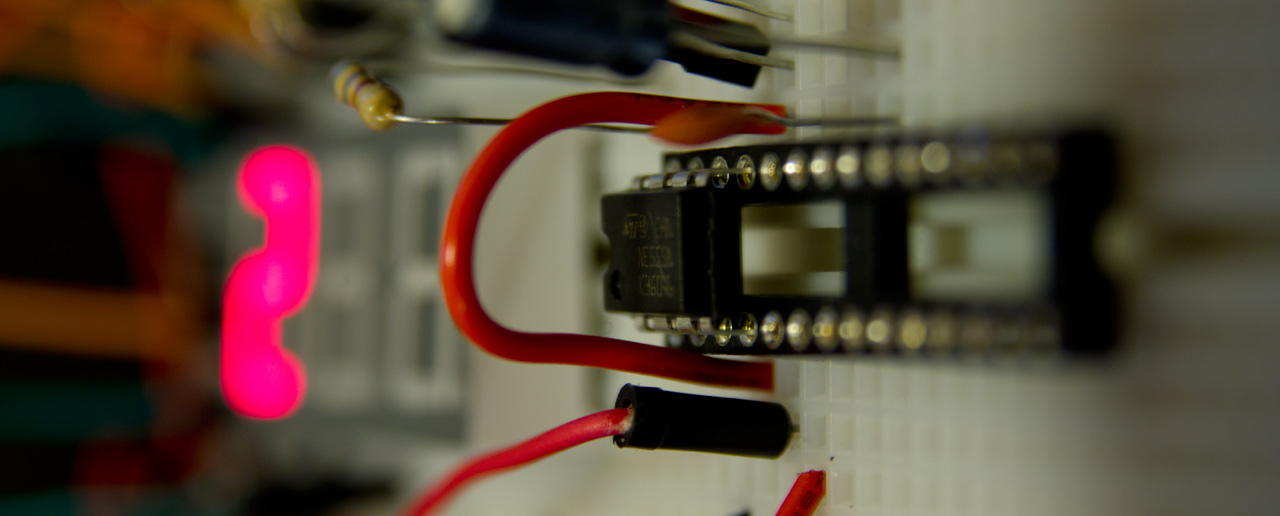Make:Electronics, experiment 18
13 February 2012 at 10:56 pm
Was able to spend about half the day on electronics today and did experiment 18 from Make:Electronics. Nice to learn about counter chips (4026) and 7-segment displays, but I really didn’t want to do all the cabling for setting up 3 of these as I got the point. Hooking it up to a 555 timer went easy and I later added a pot and some resistors so I could adjust the speed just as I wanted. I also spent a lot of time just playing with components and measuring to see how things worked and how precise my meter was.
In the evening I got sucked up, browsing the Sparkfun and Seeedstudio sites for component bits I was missing and ended up ordering a bunch of stuff while I was at it. Anyone running an online electronics shop should learn from these. Having a “wishlist” feature made me order almost twice as much as planned…
Reading specs carefully before ordering…
Among the things I ordered were two RainbowDuino’s from SeeedStudios. I already have two 8x8 RGB LED panels from them, but after a lot of browsing I realized that none of the chip vendors offer a good solution for driving these. I wonder why there’s no I2C or SPI chips that do PWM for more than 24 channels? The best circuit I could find were the TLC5951 from TI and I would have to use eight (!) of these $5 SMD’s just to drive one of the panels. Since they’re SMD you would also have to make your own PCB, so it’s much easier to just get the premade $25 solution from SeeedStudios.
Some time ago, I browsed the Sparkfun site and saw these awesome rubber buttons. I was SO bummed out when I got the shipment and realized that I had only ordered the rubber part - not the PCB, electronics, plastic covers or RGB LEDs. In a few days I’ll have the complete 4 x 8 button pad here - at the total price of $136 and not the $19.90 that I initially thought. Now I’ll just have to figure out what to use it for 😉
Oh - and please do check out my brand new App - Arduino Companion!
